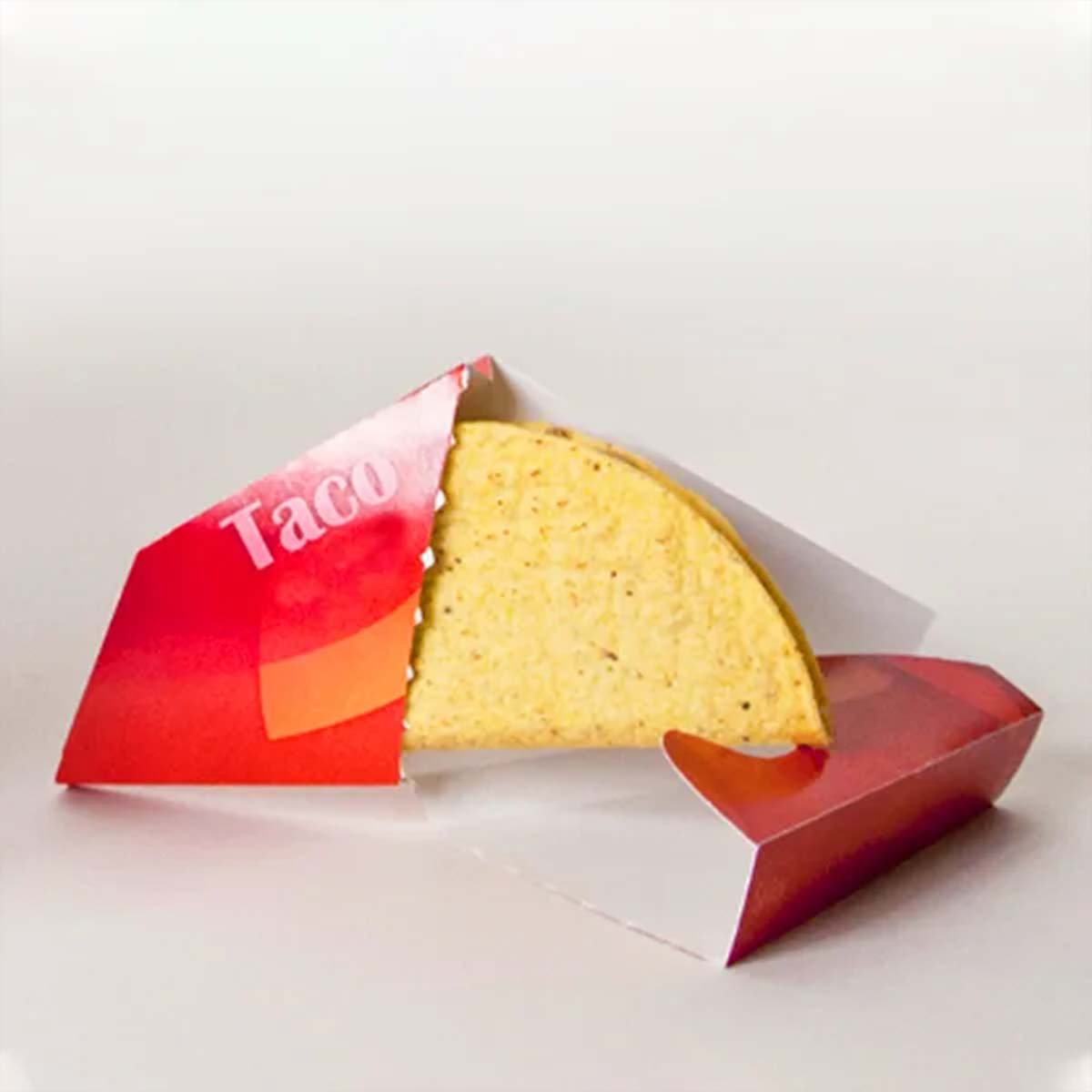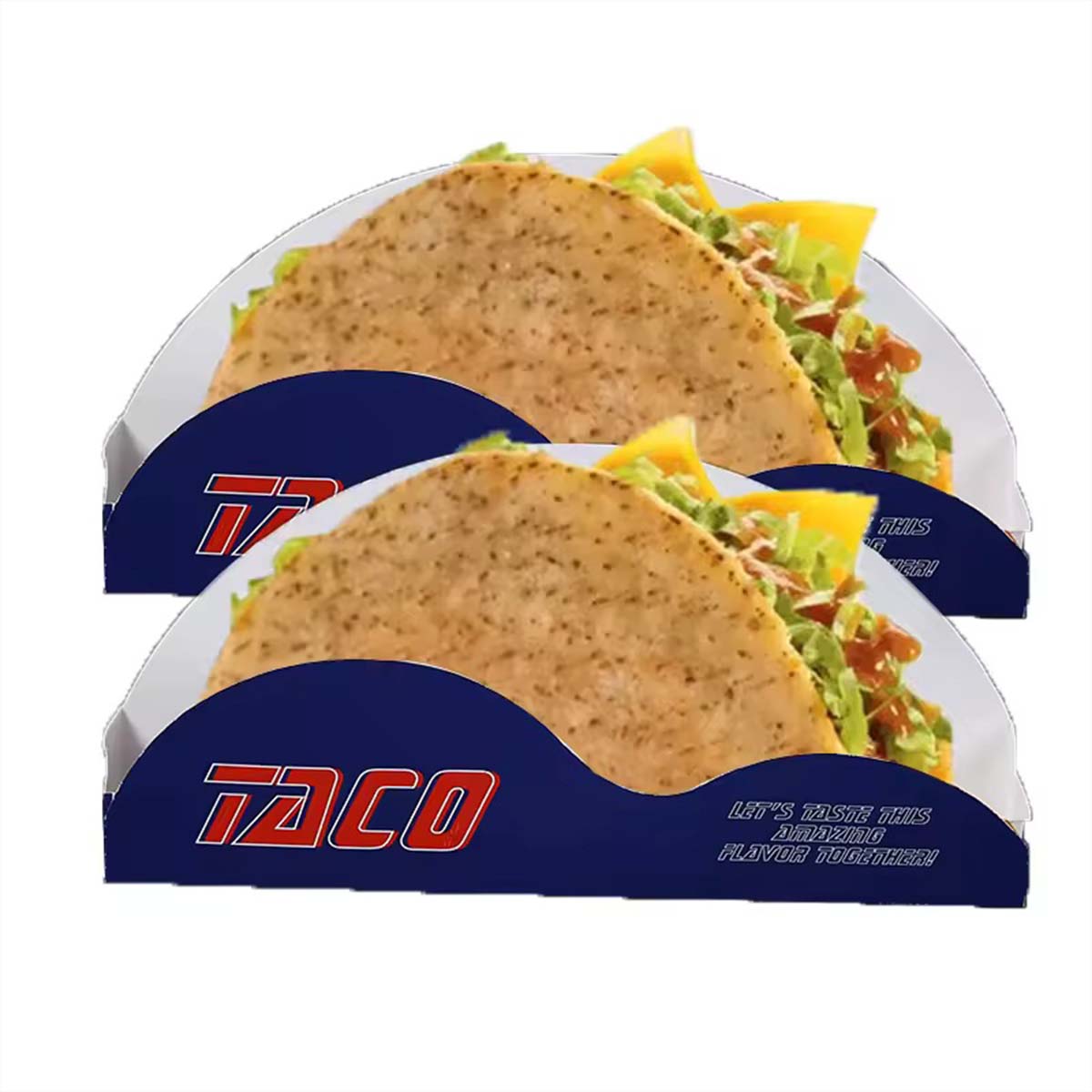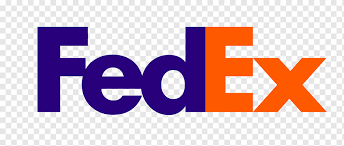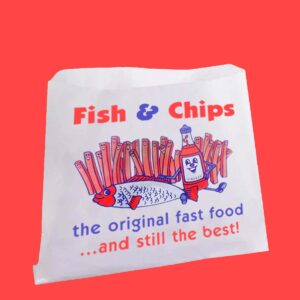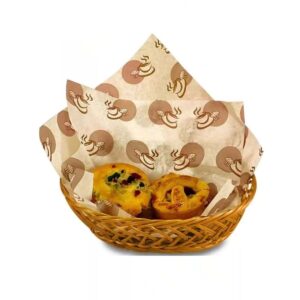Description
Grease-Resistant Custom Taco Wrapping Paper Explained
Why grease resistance matters in quick-service packaging
Tacos travel across counters, reach delivery bags, and sit in baskets during service. If the wrap leaks, the customer’s first touch is a slick surface and a stained table liner. Grease-resistant paper creates a clean handoff and protects visual appeal during the first few minutes after serving. This small upgrade reduces napkin waste, lowers cleanup time, and keeps brand printing crisp. In the middle of fast operations, the right sheet keeps fillings secure while preventing oil from wicking into trays and small food boxes, which helps staff maintain pace during peak hours.
Mess control and brand perception
A reliable barrier stops lateral oil spread, so logos and offer text remain readable. That clarity matters in photos, reviews, and at the counter. When the wrap stays dry to the touch, customers handle food with more confidence and staff spend less time double-wrapping.
Food safety and handling confidence
Grease resistance supports safer handling by preserving fiber strength. Paper that doesn’t weaken under oil keeps its fold and grip, so the taco holds together during transport. Fewer tears mean fewer repacks and a smoother service flow.
Custom Taco Wrapping Paper — materials and barrier choices
Good results start with the base sheet. Each menu and station workflow calls for a precise balance of weight, coating, and fold behavior. The goal is a wrap that seals quickly, resists bleed-through, and still breathes enough to keep textures pleasant.
When choosing paper, many businesses prefer Custom Food Printed Papers to maintain brand consistency across their packaging range. These papers are not only practical but also serve as an effective way to keep branding visible with every serving.
Paper weights and base stocks
Light builds (around 28–32 gsm) suit dry or semi-dry fillings and are popular for dine-in basket liners. Standard builds (35–38 gsm) cover most tacos with moderate sauce or oil. Heavier sheets (40–45 gsm) work for high-sauce items, slow-cooked meats, or deliveries that face longer hold times. Micro-embossed textures can add grip and reduce sticking, while smooth sheets improve print sharpness for brand marks and QR codes.
| Description | Details | Material Options | Finishing Choices | Add-ons & Features | Usage/Application |
|---|---|---|---|---|---|
| Grilled Veggie / Fish (Dry) | Suggested GSM: 28–32Lower oil load; quick fold and easy tear | Standard food-grade paper | Natural matte paper finish | Easy tearing; quick folding | Dine-in / quick-serve |
| Carne Asada / Chicken (Moderate Sauce) | Suggested GSM: 35–38Balanced barrier and fold strength | Slightly heavier kraft paper | Gloss or matte coating (optional) | Moisture resistance; firm hold | Dine-in / takeaway |
| Barbacoa / Carnitas (Juicy) | Suggested GSM: 40–45Higher holdout for long hold times | Thick kraft or recycled board | Oil-resistant finish | Enhanced durability; long-lasting protection | Takeaway / delivery |
| Breakfast Tacos (Egg/Cheese) | Suggested GSM: 35–38Stable wrap, resists melt bleed | Kraft or food-safe paper | Matte or gloss finish | Heat-resistance; maintains wrap structure | Dine-in / takeaway |
| Fried Items (Crispy Fillings) | Suggested GSM: 35–40Slightly heavier sheet to offset oil | Grease-resistant wrapping paper | Oil-blocking coating (optional) | Protects crispiness; resists sogginess | Takeaway / delivery |
Coatings and how they behave
Waxed finishes offer proven grease holdout and a quick fold. Poly or bio-poly layers improve barrier stability for hot items and longer journeys. Silicone-style release aids reduce cling so wraps open neatly at the table. A thin, food-contact-safe coating focused on the food-facing side often gives the best balance between barrier and recyclability policies. Choose the lowest coating weight that meets your leak-rate target to control cost and fiber recovery outcomes.
| Barrier type | Typical use case | Strengths | Watch-outs / notes |
|---|---|---|---|
| Light wax | Dine-in, short holds | Fast fold, classic feel | Can soften with high heat; check compost rules |
| Heavy wax | Saucy meats, mid-range delivery | Strong holdout, low bleed | Heavier sheet weight may be needed |
| Poly / bio-poly | Hot items, longer routes | Stable barrier under heat and time | Confirm recyclability guidance in your market |
| Silicone-release | Sticky cheese, fried fillings | Clean opening; less cling | Use on food-facing side only |
| Hybrid (low coat + venting) | Mixed menus | Balance of breathability and holdout | Fine-tune vent pattern during pilots |
Heat, steam, and moisture management
A wrap should defend against oil without trapping steam until a taco turns soggy. Managing airflow is essential for tortilla feel and filling texture.
Steam relief to protect texture
Tiny vent paths—or a slightly lower coating density in non-contact zones—allow moisture to escape. This helps fried fillings keep a light bite and prevents tortillas from turning rubbery. Teams often trial two venting patterns: a full-sheet micro-vent for fried items and a concentrated top-edge relief for braised meats.
Balancing warmth and dryness
Heat retention is useful, but too much humidity dulls herbs and softens crisp edges. Pair the wrap with a breathable basket liner or leave a small fold gap on the trailing edge. For delivery, test closed vs. partially vented folds to see which version holds flavor while avoiding wet patches.
Printing, legibility, and brand standards
Grease can blur artwork if ink, coating, and sheet are mismatched. The right ink system and layout choices keep identity sharp across dine-in and delivery.
Ink systems, layout, and fold zones
Oil-tolerant, low-setoff inks reduce smudge on busy lines. Keep small text and key marks at least 8–10 mm away from major fold lines to avoid cracking. If you print a repeating pattern, align it so the primary logo remains visible after a standard taco fold; this supports quick social photos and table visibility.
| Feature | Details | Material Options | Finishing Choices | Add-ons & Features | Usage/Application |
|---|---|---|---|---|---|
| Minimum Type Size | 7–8 pt equivalent on patterned or printed areas | Standard paper, coated stocks | Clear text rendering finishes | Sharp font printing | Keeps fine text readable even under wear or folding stress |
| Safe Zone from Folds | 8–10 mm clearance around primary creases | All cardboard & board types | Non-cracking ink options | Protective crease alignment | Reduces ink cracking, distortion, and smudging |
| Ink System | Oil-tolerant, low-setoff inks | Food-safe inks, eco-solvent inks | Gloss or matte ink-protective coatings | Smudge-resistant formulas | Prevents smears during rapid service or handling |
| Logo Repeat Spacing | 60–90 mm diagonal offset for visibility | Kraft, SBS, Recycled materials | High-resolution repeat pattern options | Custom repeat branding | Ensures logo is visible even after folding |
| QR / Promo Placement | Outer quadrant, away from main grip areas | Coated boards, laminated papers | Smudge-resistant coating in QR areas | Placement consulting | Prevents thumb smears/scuffs, improves scannability |
Basis Weight and Barrier Type Information
For direct food contact, request supplier statements on compliance and migration limits that match your market. Ask for coating composition notes and a simple spec sheet listing basis weight, barrier type, and heat tolerance. Clear labeling on outer packs—sheet count, open dimensions, and max temp—helps line staff restock faster and avoid mixing variants.
Line speed, wrapping technique, and menu fit
Grease-resistant paper should support quick moves, not slow them. The easiest way to judge is to watch the first hour of a lunch rush with a stopwatch and sample count.
Custom Food Basket Liner can also help streamline busy service times. Using properly sized liners in baskets or trays makes wrapping and serving faster while reducing waste. They keep food secure, absorb grease, and give customers a neat presentation without slowing down the line.
Training tips and fold patterns
Two common folds suit most menus: a burrito-style tuck for saucy fillings and a tri-fold for drier tacos. Pre-score marks aren’t needed, but a faint grid print can guide new hires. Keep sheets cut to a size that allows a single wrap with a modest overlap—excess paper adds bulk and cost.
Matching paper to menu items
Citrus-marinated meats and slow-cooked fillings need higher barrier and a slightly heavier sheet. Dry grilled fish or veggie tacos can use a lighter grade to save weight and improve feel. If you offer both, standardize on a mid-weight for the line and reserve a heavier variant for delivery packs.
Sustainability signals and cost control
Guests notice when packaging aligns with environmental goals, and operators watch margins. The right spec can serve both.
Material recovery and clear messaging
Uncoated or lightly coated papers with fiber-friendly barriers support better recovery in many regions. If compostable or bio-based options are used, print a short disposal note near the edge: “Dispose according to local guidance.” Keep claims simple and verifiable; avoid vague terms and list the barrier type on B2B spec sheets.
Unit economics and supplier alignment
Most of the cost sits in basis weight, coating, and print coverage. Trim waste by selecting the smallest sheet that achieves a clean wrap. Run artwork that works across multiple SKUs so you can buy longer runs and reduce setup charges. Request two prices during quoting—a mid-weight and a heavy variant—so you can assign each to the right channel without frequent reprints.
Quality checks before scaling up
A short pilot prevents headaches during busy seasons. Validate barrier performance and handling on real shifts rather than only in a test kitchen.
Simple tests that catch problems early
Run a blot test on hot tacos and track minutes to visible bleed-through. Count wraps that tear at folds and note any ink smear on gloves. Measure time per wrap for new staff on day one and day three; the best papers show a drop as muscle memory forms. Check liners and baskets for oil rings after five minutes and after ten.
Documentation to keep teams aligned
Ask your supplier for dielines (if you use pre-cut sheets for baskets), basis weight certificates, and barrier descriptions. Keep a one-page SOP at the station that shows the fold pattern, sheet size, and which items use which grade. When teams shift locations or add a pop-up, those notes carry standards with them.


